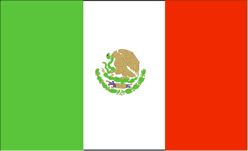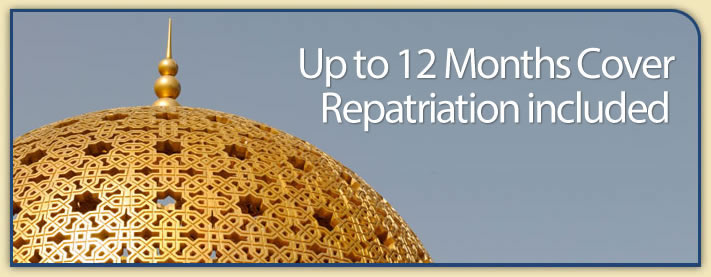Country Guide • Mexico

Mexico is located in the southern region of the North American Continent. It is bound by the United States of America to the north, the Gulf of California to the north west, the Pacific Ocean to the west and south west, Guatemala and Belize to the south as well as the Gulf of Mexico to the east. Around 66% of the country is mountainous. Mexico’s geographical features range from swamp land to desert, and from tropical lowland jungle to high alpine vegetation.
| Official Name | United Mexican States |
|---|---|
| Area | 1,972,547km² (761,605mile²) |
| Population | 104,908,000 |
| Continent | North America |
| Population per mile² | 138 |
| Capital City | Mexico City |
| Religions | 93% Roman Catholic. Other religious minorities include Protestants and Jews |
| Language | Spanish and 59 indigenous languages |
| Government | Federal Republic |
| Currency | New Peso |
| GDP | $900 billion |
| GDP per Head | $9,000 |
| Natural Resources | Petroleum, silver, copper, gold, lead, zinc, natural gas and timber |
| Land Use | Arable Land 13% |
| Agriculture | Corn, wheat, soybeans, rice, beans, cotton, coffee, fruit, tomatoes, beef, poultry, dairy products; and timber |
| Industry | Agriculture, Aluminum Refining, Cement, Chemicals, Food and Beverages, Iron and Steel, Machinery, Mining, Motor Vehicles, Oil and Natural Gas Production and Refining, Pottery, Services, Textiles and Clothing, Tobacco and Tourism |
| Tourism | Mexico is packed full of everything a traveller can ask - ancient ruins, beaches, desert landscapes, old colonial towns, snow-capped volcanoes, and impressive interior with tropical rainforests |
| Natural Hazards | Tsunamis along the Pacific coast, volcanoes and destructive earthquakes in the centre and south, and hurricanes on the Pacific, Gulf of Mexico, and Caribbean coasts |
| Health Risks | Malaria, Chagas' disease, cholera, dengue fever, filariasis, hepatitis, rabies, tetanus, typhoid. Water must be purified or boiled |
| Climate | Mexico has two different climates depending on altitude and winds , a tropical or temperate climate . A tropical climate can be found along the coastal region of the Yucatan Peninsula and the lower areas of southern Mexico, and a temperate climate is found in areas with an elevation higher than 900 metres (3,000 feet). Most of Mexico is dry with about 14% of the land area receiving adequate rainfall in all seasons. Average temperature ranges in Mexico City are from 6 to 19°C in January to 12 to 26°C in May |
| Time | GMT/UTC+6 hours except (Baja California Sur and several other states in the north west + 7 hours) and Baja California Norte + 8 hours |
| National Days | September 16 |
| Visas | Tourists including the UK, USA, Canada, Australia, New Zealand, Japan, Argentina, Chile and virtually all Western European countries visiting Mexico need a valid passport and should obtain a tourist card (known as the "FMT") available from Mexican Consulates, Mexican international airports and border crossing points and most airlines serving Mexico. If you are under 18 and are not travelling with both your parents, special rules apply. If you are travelling with only one parent, you must be able to produce notarised consent from the other. If you are travelling without either parent, you must bring notarised permission from both. If in any doubt, consult the Mexican Embassy |
| British Embassy | Embassy Details |
Information Only
The content above is for information purposes only and we have tried to ensure that the information is as accurate as possible. We cannot accept any responsibility for any inconvenience, loss or injury as a result of the information above. You should always check and verify any critical information like visas, health and safety and customs with the relevant authorities before you travel since information can change at any time.



